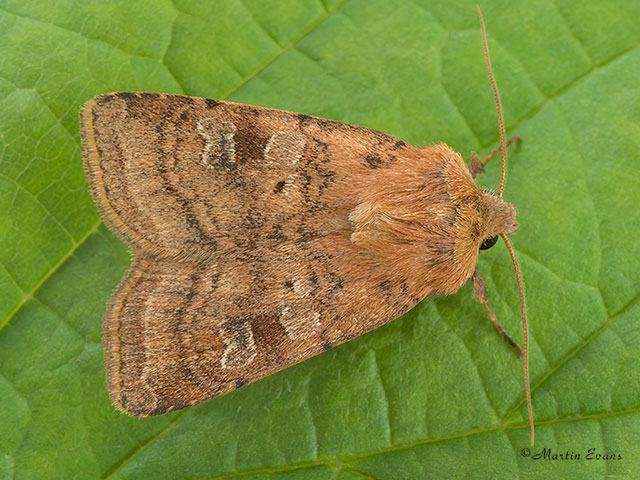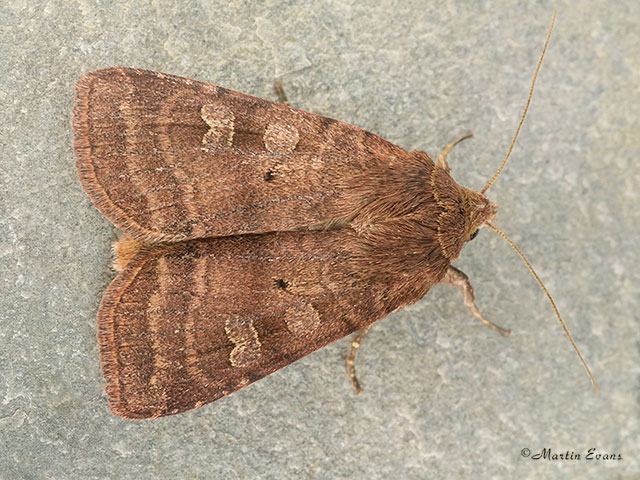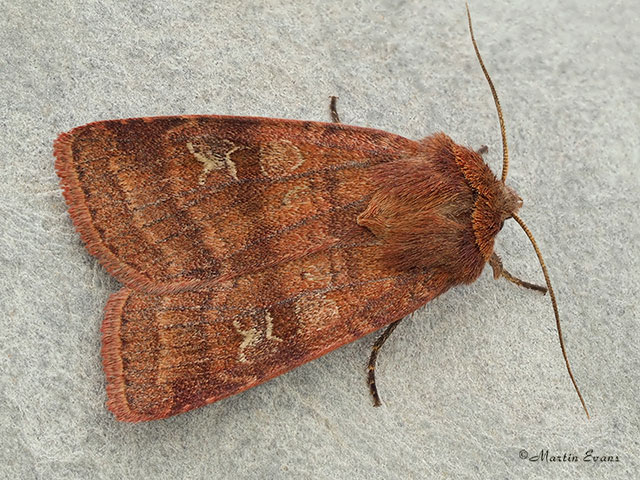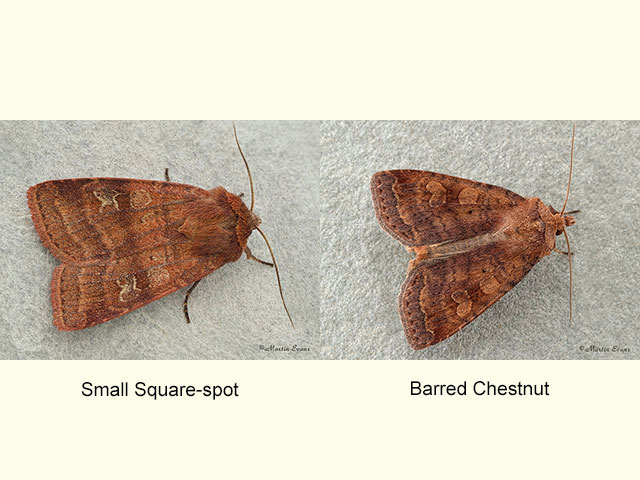Noctuidae
73.334 Small Square-spot Diarsia rubi (Vieweg, 1790)
Common
Similar species: Fen Square-spot Diarsia florida is on average larger and lighter in colour. Barred Chestnut Diarsia dahlii is larger (15 to 18mm) and darker with a curved leading edge to the forewing. The outer central cross-line is usually much more wavy. Ingrailed Clay Diarsia mendica is on average larger (13 to 17mm) with a straighter leading edge and an outer central cross-line that is usually much more wavy. The darker forms of Ingrailed Clay in the north can be very similar but have more contrasting markings.
Forewing: 12 to 16mm
Habitats: Damp deciduous woodland, marshy grassland, acid woodland, moorland, heathland, coastal grassland and gardens.
Habits: The moth visits the flowers of grasses, ragworts and other plants. It is attracted to sugar and light.
Foodplant: The nocturnal larva feeds on Dandelion, docks, Foxglove, Heather, plantains, chickweeds and other herbaceous plants. It hides in the leaf litter or loose soil during the day. It pupates under the soil.
On the European mainland it has also been recorded feeding on Raspberry, Bilberry and grasses.







